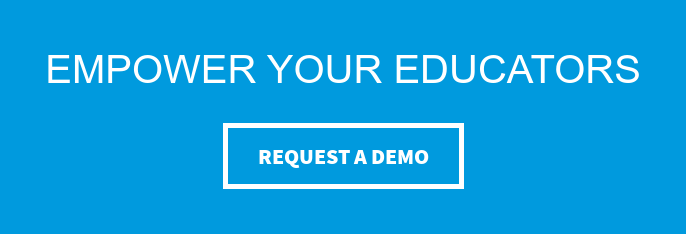Badge Messenger recognizes the importance of empathy, teacher empowerment, and social-emotional learning in the classroom. Providing students with a learning-centered environment is what Badge Messenger strives to complement in any academic setting. Every student has a different journey, and has their own unique needs. These three aspects help to unite students and teachers to be effective, in both learning and teaching.
Empathy and Social-Emotional Learning
The ability to understand the feelings of what another person is experiencing is an essential quality learned at a young age. Students often do not see things from perspectives differing from their own. Teaching empathy creates opportunities for students to understand what is going on in the world; to consider how they would feel when placed in the same situation another student has faced. Teachers and other students can be role models exemplifying empathy, in their interactions and willingness to help other students.

Students spend a majority of their day in school, which makes it difficult to disregard their social-emotional learning needs. School is also the place where students carry out most of their social interactions, develop relationships, encounter challenges and opportunities for personal growth. Social-emotional development includes a child’s experience, expression, and management of emotions, ability set and achieve positive goals, and the ability to establish positive and rewarding relationships with others (Cohen and others 2005). Developing adequate social-emotional skills enables children to positively contribute to their life and the people surrounding them.
Teaching Empathy
Having conversations about empathy heightens students' ability to perceive the concept, whether the concept is introduced through readings, external events, or interactive videos. Teachers do not always have to turn to fictional stories for empathy lessons, news articles and other nonfiction and current events are also a great tool. Some teachers choose to hold class meetings, to discuss feelings and emotions, and how students can be empathetic in their interactions with one another.
There’s something immensely helpful about actually seeing empathy play out. Today’s teachers now have plenty of video options online to choose from. Following the video, it’s important to further foster the lessons learned through class discussion. Teachers can divide the class into small groups to discuss the importance of being kind and understanding, or they can organize other activities highlighting the lesson. These activities should be ongoing, encouraging empathy long after the video was shown.
Some teachers hold class meetings only when necessary, often stopping class so they can discuss timely issues. Whether the meetings are pre-planned or inspired by internal or external classroom events, it’s important these conversations are common, expected, and inclusive. Reading and watching videos can provide many great examples for students to model empathy on. But, the best examples are those students see and experience in their every day lives.
For additional resources on teaching empathy in the classroom, check out Caitlin Warren, a former classroom teacher who now leads community engagement for ClassDojo. Follow Caitlin on Twitter at @CaitClassDojo.
For more, see:
- Helping Students Develop Discernment, Agency, and Empathy
- True Leadership Starts with Empathy
- Design Thinking: Teaching the Importance of Empathy in Business
Empowering Teachers
Teachers are accountable for the academic and emotional development of multiple students, at the same time. Badge Messenger strives to provide teachers with additional support through their technological resources. With Badge Messenger, a teacher is able to quietly and seamlessly request help when they see a student struggling or in need. The Messenger is worn around the teacher's neck, so it is with them at all times.
If a child struggles with behavioral issues, the button can be pushed quietly and effortlessly before the child spirals out of control. After the button is pressed, another staff member will be able to step in and ask the student to step out in a positive manner - “I need your help, come take a walk with me.” Badge Messenger provides students with behavioral issues positive opportunities to process and deal with their emotions, and progress towards changing difficult behaviors.
Your students’ perception of behavioral learning can be transformed from negative to positive. Students learn from the interactions demonstrated by every individual within the classroom. When one student has a behavioral situation, the other students are present to witness how the situation is handled. If the teacher has support, they will have the capability to positively manage the situation, benefiting all students. Student growth in a school community is important to not only benefit students, but also contributes to teacher empowerment.
Badge Messenger®
As any teacher can attest, interruptions are an inevitable part of every school day. A school consists of dozens of staff members, numbers of students, and factors of maintenance issues, fire drills, assemblies, and weather issues. It’s easy to see how unexpected issues can pop up and serve as distractions. Plenty of research has been done about the impact of frequent interruptions and the negative repercussions on productivity. When the unexpected happens, teachers are forced to divert their attention away from teaching and can find it difficult to get back on track.
Students often have an even harder time than adults recovering their focus after an interruption. Some interruptions may be unavoidable, but with the support of a discreet school alert system, teachers can minimize the time spent dealing with disturbances, or even prevent them before they start.
We often hear it takes a village and with Badge Messenger, teachers, students, parents, and the school community will know they are a button push away from the help they need to support positive learning in the classroom. Providing a positive, supportive atmosphere for all learners.
